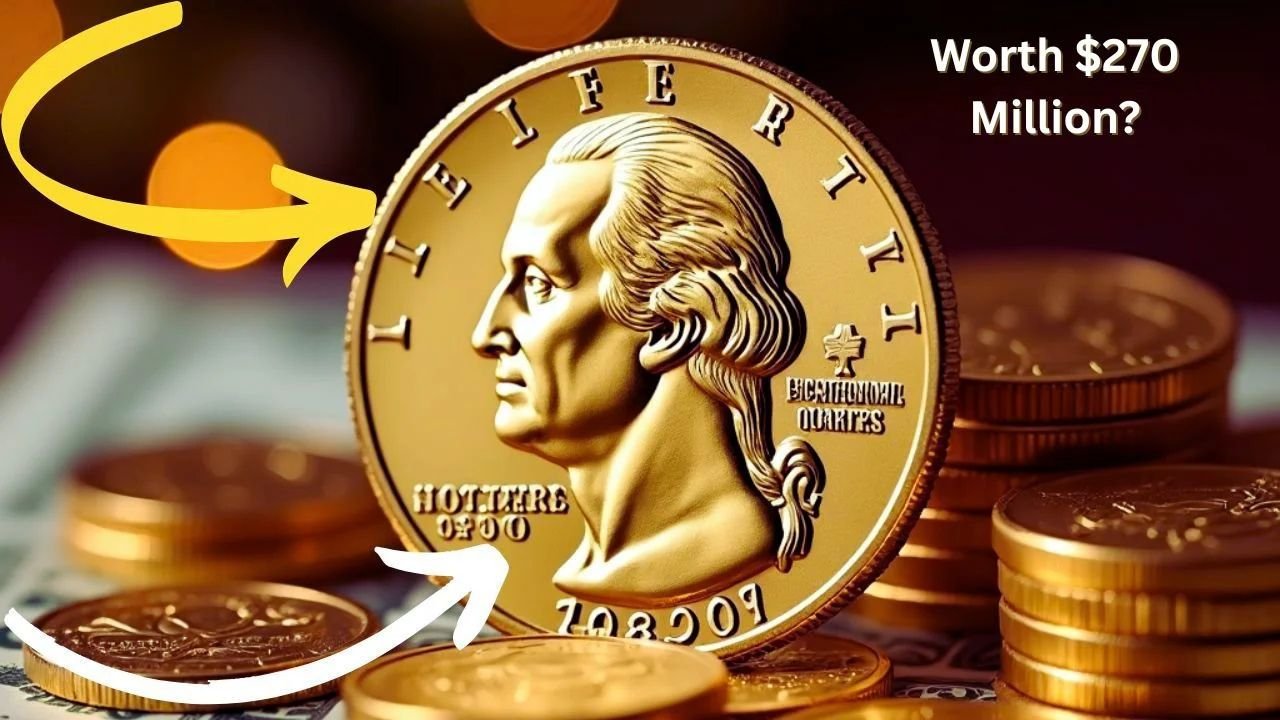Ever wondered if that dusty jar of coins on your shelf could be hiding a treasure? From rare pennies to misprinted nickels, some pocket change has fetched millions at auctions. Dive into the thrilling world of coin collecting and discover how everyday coins could make you rich. Let’s explore the coins that could turn your spare change into a fortune!
Why Some Coins Are Worth More Than Their Face Value
Not all coins are created equal. While most pennies, nickels, and dimes are worth exactly what’s stamped on them, certain coins become valuable due to rarity, historical significance, or minting errors. Collectors, or numismatists, hunt for these gems, driving up their value in a competitive market.
The Role of Rarity in Coin Value
Rarity is the biggest factor in a coin’s worth. Coins produced in limited quantities, like the 1913 Liberty Head Nickel (only five known to exist), can fetch millions. Low mintage numbers, often due to short production runs or specific historical events, make these coins scarce and highly sought after.
Limited Mintage Examples
Take the 1933 Double Eagle gold coin, for instance. Only a handful escaped destruction when the U.S. went off the gold standard, making it one of the most valuable coins ever sold, with one fetching $18.9 million in 2021. Coins like these are the holy grail for collectors.
Minting Errors: Happy Accidents
Minting errors can turn ordinary coins into extraordinary finds. These are mistakes made during production, like double strikes (when a coin is stamped twice) or wrong planchets (when a coin is struck on the wrong metal). A famous example is the 1955 Double Die Lincoln Penny, where the date and lettering appear doubled, making it worth thousands today.
Spotting Error Coins
Error coins are often subtle, so you’ll need a keen eye. Look for doubled images, missing letters, or unusual edges. A magnifying glass can help, and if you suspect you’ve found an error coin, consult a professional grader like PCGS or NGC for authentication.
Historical Significance Adds Value
Coins tied to significant historical moments often carry a premium. For example, the 1969-S Lincoln Penny with a doubled die obverse is not only rare but also a snapshot of a time when the U.S. Mint was refining its processes. These coins tell a story, making them irresistible to collectors.
Coins with a Story
The 1943 Bronze Lincoln Penny is a wartime legend. During World War II, pennies were made of steel to save copper for the war effort, but a few bronze pennies were accidentally minted. One sold for $1.7 million in 2010. Finding one in your change is like hitting the jackpot.
How to Identify Valuable Coins in Your Pocket
You don’t need to be a numismatist to spot a potential treasure. Start by checking your change for older coins, especially those from before 1965, when U.S. coins contained silver. Here’s a quick guide to get you started.
Step-by-Step Coin Hunting
- Check Dates and Mint Marks: Look for coins with low mintage years or specific mint marks (like “S” for San Francisco or “D” for Denver). A 1969-S penny could be worth thousands if it’s a doubled die.
- Inspect for Errors: Use a magnifying glass to spot double strikes or missing elements.
- Research Key Coins: Familiarize yourself with high-value coins like the 1916-D Mercury Dime or the 1970-S Small Date Lincoln Penny.
- Get It Graded: Professional grading services can confirm a coin’s authenticity and condition, boosting its value.
Tools for Coin Collectors
A good coin guidebook, like the Red Book (A Guide Book of United States Coins), is invaluable. Apps like PCGS CoinFacts can also help you identify coins on the go. Invest in a loupe (a small magnifying glass) for close inspections.
Valuable Coins to Watch For
Here’s a quick rundown of coins that could be hiding in your change, along with their potential value:
| Coin | Year | Key Feature | Estimated Value |
|---|---|---|---|
| Lincoln Penny | 1955 | Double Die Obverse | $1,000–$2,000+ |
| Lincoln Penny | 1943 | Bronze (not steel) | $100,000–$1.7M |
| Liberty Head Nickel | 1913 | Only 5 known | $3M–$5M+ |
| Mercury Dime | 1916-D | Low mintage | $1,000–$50,000 |
| Double Eagle | 1933 | Gold, rare | Up to $18.9M |
Where to Find These Coins
Check piggy banks, old jars, or even your couch cushions. Flea markets, estate sales, and coin shops are also great hunting grounds. You might stumble upon a rare coin someone overlooked.
Selling Your Valuable Coins
Found a potential treasure? Don’t rush to spend it. Get it appraised by a reputable dealer or grading service. Auction houses like Heritage Auctions or Stack’s Bowers specialize in rare coins and can help you get top dollar. Be wary of local pawn shops, as they may undervalue your find.
Tips for Selling
- Preserve Condition: Handle coins by the edges to avoid scratches or oils from your fingers.
- Document Provenance: If your coin has a backstory (e.g., inherited from a relative), it could add value.
- Compare Offers: Get multiple appraisals to ensure you’re getting a fair price.
Conclusion: Start Your Treasure Hunt Today
Your pocket change could be hiding a fortune waiting to be discovered. Whether it’s a rare penny or a misprinted dime, the world of coin collecting is full of surprises and opportunities. Grab a magnifying glass, check those coins, and who knows—you might just find a million-dollar treasure in your spare change. Happy hunting!
